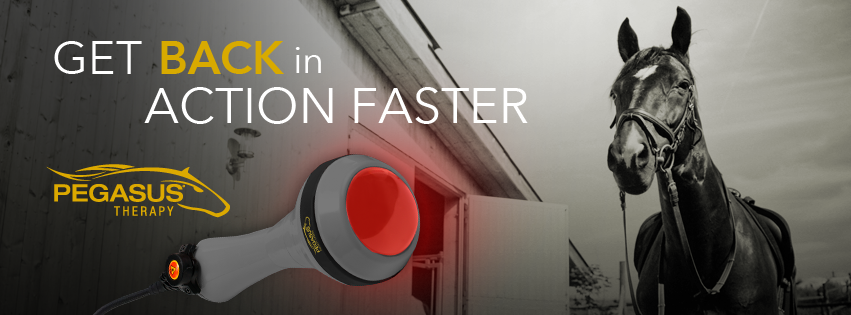Equine Therapy Programs: Transforming Lives One Adventure at a Time
Equine Therapy Programs: Transforming Lives One Adventure at a Time
Blog Article
Reviewing the Effectiveness of Laser Treatment in Equine Therapy for Injury Rehabilitation
The examination of laser treatment's efficiency in equine injury rehabilitation hinges on multiple elements, consisting of recovery time, pain reduction, and tissue regeneration. Vets often observe superior outcomes with laser treatment compared to conventional methods, positioning it as an important element in equine care.
Comprehending Laser Therapy
Laser therapy has become an essential tool in veterinary medicine, particularly in the treatment of equine problems. Known for its non-invasive nature and efficiency, laser treatment includes the application of particular wavelengths of light to boost tissue repair work and minimize swelling. This restorative technique is significantly favored for its ability to accelerate the recovery process in equines struggling with a variety of bone and joint injuries and chronic problems.
The main mechanism behind laser therapy is its ability to improve mobile functions. In addition, laser treatment advertises vasodilation, improving blood circulation and oxygen distribution to broken tissues, hence quickening healing.
In equine medicine, laser treatment is specifically helpful for conditions such as tendonitis, osteoarthritis, and wound healing. The method is admired for its pain-relieving buildings, allowing steeds to gain back mobility and feature extra quickly. Vets also value its very little adverse effects contrasted to various other therapy methods, making it a dependable and risk-free alternative for equine care.

How Laser Treatment Functions

Upon absorption, these photons cause a collection of biochemical adjustments, improving mitochondrial feature and resulting in raised adenosine triphosphate (ATP) manufacturing. This increase in ATP speeds up mobile metabolic process, advertising cells fixing and regeneration. Additionally, laser therapy modulates inflammatory reactions by impacting cytokine degrees and reducing oxidative anxiety, thus relieving pain and swelling.
An additional substantial facet of laser therapy is its function in enhancing microcirculation. The treatment promotes vasodilation, improving blood flow and oxygen delivery to broken tissues (Equine Therapy). This assists in the elimination of mobile particles and sustains the proliferation of fibroblasts and collagen synthesis, vital for injury recovery
Medical Proof
The effectiveness of laser treatment in equine treatment has actually been corroborated through different professional studies, showcasing its therapeutic possible across a series of conditions. Numerous controlled tests and empirical studies have recorded significant improvements in cells repair work, pain decrease, and overall rehabilitation timelines. A research conducted by Turner et al. (2012) demonstrated that equines treated with low-level laser treatment (LLLT) for ligament injuries exhibited sped up healing contrasted to those getting conventional therapies. The study highlighted a marked reduction in swelling and boosted collagen formation.
In a similar way, research study by Johnson and associates (2015) concentrated on equine muscle mass injuries, disclosing that laser therapy significantly quickened muscular tissue fiber regeneration and reduced muscle mass rigidity. These searchings for were substantiated by histological evaluations revealing better muscle cells company. Clinical assessments have shown that laser treatment can alleviate persistent problems such as osteoarthritis. A research study by Smith et al. (2018) reported that horses with osteoarthritic joints experienced remarkable pain relief and increased variety of activity following a routine of laser treatment sessions.
Vet Insights

Veterinarians likewise value the versatility of laser therapy. She aims out that laser therapy can be tailored to the certain needs of each horse, ensuring ideal results.
Moreover, vets value the capability to integrate laser treatment with other treatment methods. This see this site multimodal method can boost general therapy efficiency, giving a detailed option for equine rehab. Such recommendations from experienced specialists emphasize the growing acceptance and application of laser treatment in equine medication.
Practical Considerations
An essential facet of applying laser treatment in equine treatment entails comprehending the useful considerations that guarantee its efficiency and safety. Primarily, it is crucial to choose the appropriate laser device, as numerous kinds vary in wavelength, power, and infiltration depth. Equine Therapy. Vets have to be fluent in these specifications to tailor treatment methods effectively to every injury kind
Additionally, the frequency and duration of laser treatment sessions require cautious planning to make best use of restorative benefits while lessening any kind of potential negative effects. Regular monitoring of the equine's reaction to treatment can direct necessary modifications in the treatment program. Developing a risk-free and controlled environment throughout therapies is likewise necessary to avoid unintentional direct exposure to laser exhausts, which could hurt both the equine and the trainer.
Educating and qualification of workers providing laser therapy are extremely important to guarantee correct technique and to maintain safety and security standards. Additionally, maintaining precise documents of each session, including laser setups and observed results, is essential for evaluating the general efficiency of the treatment and for making data-driven choices.
Verdict
Laser treatment has become an effective method in equine injury recovery, using significant advantages in recuperation time, pain relief, and cells recovery. Professional researches underscore significant enhancements in conditions such as tendonitis and osteoarthritis, credited to enhanced mobile feature and increased ATP manufacturing. Vet observations support these searchings for, highlighting remarkable results contrasted to conventional therapies. For ideal results, continuous surveillance and individualized treatment methods stay important in leveraging the full potential his response of laser treatment in equine care.
Report this page